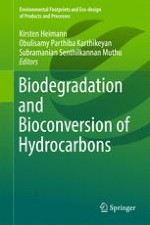This book details three main topics: the screening and characterization of hydrocarbons from air, soil and water; technologies in the biodegradation of hydrocarbons; and the bioconversion of hydrocarbons for biofuel/chemicals, as well as recent developments in the remediation of hydrocarbons and their environmental benefits. The first section focuses on screening methods, qualitative and quantitative analysis of hydrocarbons from soil, air and water environments, speciation of hydrocarbons, and natural bioremediation strategies in such environments. The second section examines technologies for removing hydrocarbon contaminants from various environments, especially advanced technologies for the removal of hydrocarbons and in-situ and ex-situ remediation strategies and problems, as well as concrete case studies. The last section, covering the bioconversion of hydrocarbons for biofuel/chemicals, highlights the biochemicals and bioproducts developed from hydrocarbons, with a particular focus on biochemical and chemical technologies used to produce biopolymers, biofuel precursors and commodity chemicals from hydrocarbons.
